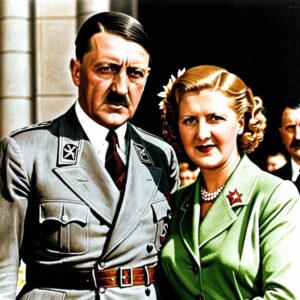As the Soviet forces closed in on Berlin in April 1945, Adolf Hitler and Eva Braun made the ultimate decision to take their own lives in the face of defeat. The once-powerful dictator, who had ruled Nazi Germany with an iron fist, was now cornered in his underground bunker, with the end of the war in sight. Hitler, whose ambitions had led to the devastation of much of Europe, faced the collapse of his empire. Eva Braun, who had been by his side for over a decade, followed him into this tragic end, forever bound to the Führer in both life and death.
The two chose suicide as the only way to avoid capture by the advancing Soviet forces. Hitler, knowing the inevitability of his downfall, ingested cyanide and shot himself in the head. Eva Braun, his loyal companion throughout the war, consumed cyanide, ending her life beside him. Their deaths occurred on April 30, 1945, marking the symbolic end of Nazi Germany. The couple’s decision to die together in the final moments of their lives reflects the despair of a regime that had once been the epitome of power but had crumbled under the weight of its own atrocities.
Their suicides were not just the deaths of two individuals, but the end of an era that had brought untold suffering to millions. As the war neared its end, many saw Hitler’s death as a necessary step toward peace, though it came at a staggering human cost. For Eva Braun, her relationship with Hitler had been marked by a desire for recognition and an enduring loyalty to a man whose very name would forever be associated with hate and destruction. The tragic final act of their lives left a dark mark on history, reminding the world of the dangers of unchecked power and the human toll of war.

